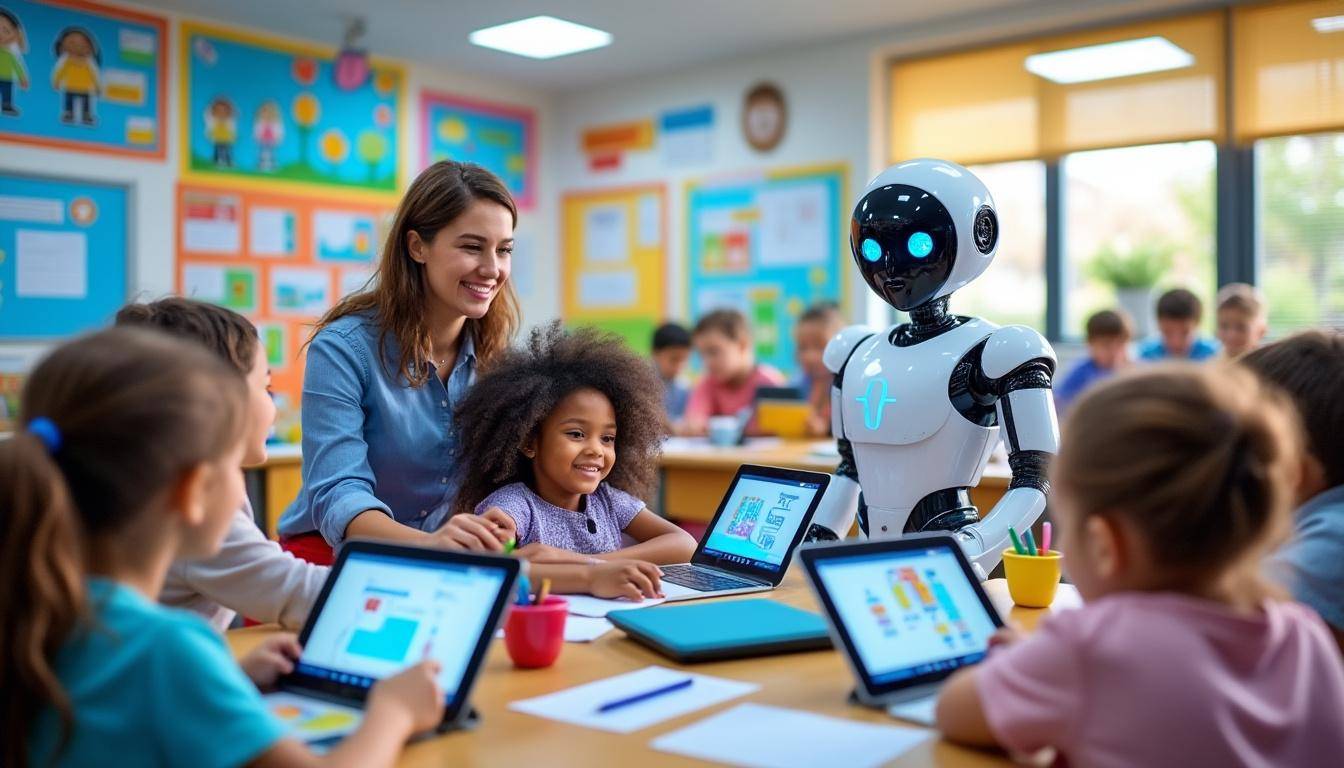Artificial Intelligence Transforming Children’s Education: Expert Perspectives on the Future
Artificial Intelligence (AI) is rapidly reshaping the educational landscape for children, offering a promise of personalized learning, greater accessibility, and enhanced engagement. The integration of AI tools such as Khan Academy, Duolingo, and DreamBox Learning is already playing a pivotal role in tailoring lessons to individual learner needs, ensuring that students can progress at a comfortable pace. Technology experts agree that this shift is more than a trend—it marks a fundamental change in how education is delivered and experienced.
How AI Enables Personalized and Adaptive Learning Experiences
One of the most transformative aspects of AI in education is its ability to adapt content dynamically based on student progress and learning style. Platforms like Century Tech and BYJU’S utilize AI algorithms to assess strengths, weaknesses, and learning habits, thus creating highly individualized study pathways. This model eradicates the traditional “one-size-fits-all” approach that has long constrained educators and learners alike.
- Tailored content delivery: AI adjusts lesson difficulty based on real-time learner data.
- Instant feedback mechanisms: Tools like Socratic by Google help students receive answers and explanations promptly.
- Engagement through gamification: Interactive platforms such as ABCmouse foster motivation while encouraging critical skills.
These features collectively contribute to a learning experience that is not only more effective but also more engaging for diverse student populations.
Bridging Educational Gaps: Accessibility and Equity Through AI Innovations
Equity in education remains a significant challenge globally. AI-powered solutions like Brainly and Coursera are vital in democratizing access to quality education by connecting students with resources regardless of geographic or socioeconomic barriers. With initiatives emphasizing internet accessibility and technology distribution, more children are able to benefit from rich, AI-driven educational content.
- Remote learning support: AI companions assist students in rural or underserved areas.
- Language localization: Duolingo employs AI to help non-native speakers improve linguistic skills effectively.
- Customized resource recommendations: AI tools guide learners toward content suited to their needs and goals.
Ensuring all students have access to such tools is critical for fostering inclusion and enabling every child to thrive academically.
Preparing Students for an AI-Driven Workforce
Technology experts stress that AI’s influence extends beyond current classroom experiences; it is also about equipping youth for future careers that will heavily depend on AI literacy. Platforms like Quizlet and DreamBox Learning integrate critical thinking and problem-solving exercises within their AI frameworks to build essential 21st-century skills.
- Skill building: Developing adaptability, creativity, and analytical thinking through interactive AI lessons.
- Career readiness: Empowering students to understand and innovate with AI technologies.
- Lifelong learning orientation: Encouraging continuous education as AI evolves.
By blending academic knowledge with practical AI competencies, children become more than consumers of technology—they evolve into informed innovators and leaders.
Challenges and Considerations in Implementing AI in Children’s Education
Despite its advantages, AI integration must navigate several challenges, such as data privacy, ethical use, and ensuring human oversight remains integral. Thoughtful strategies are necessary to harness AI’s capabilities without displacing the vital human elements of empathy and mentorship in education.
- Data security: Protecting student information from unauthorized use.
- Maintaining teacher roles: AI should support—not replace—educators.
- Addressing bias in AI algorithms: Continuous monitoring to avoid reinforcing inequities.
Resources like AI Education Parent Advice provide valuable insights for parents to navigate this new educational environment thoughtfully.
Successful Models and Community Engagement
Successful AI adoption often involves collaborative efforts among parents, educators, and policymakers. Initiatives such as Montclair Empowering Families demonstrate how communities can embrace AI tools while upholding values rooted in child-centric education.
- Parental involvement: Encouraging active participation in AI-augmented learning.
- Educator training: Offering professional development to maximize AI’s pedagogical potential.
- Policy support: Creating frameworks that balance innovation with ethical concerns.
Adopting AI thoughtfully promotes a harmonious education ecosystem that benefits all stakeholders.


